JPG/JPEG Recovery: How to Recover Deleted JPG/JPEG Files
Quick Navigation:
- Part 1. What are the Differences between JPG and JPEG?
- JPEG:
- JPG:
- Part 2. Is It Possible to Recover Deleted JPG/JPEG Files?
- Part 3. How to Recover JPG Files Quickly and Completely
- Step by Step to Recover JPG/JPEG files
- Part 4. 5 Sites to Repair Corrupted JPEG Files Online
- Part 5. How to Recover Photos from Corrupted/Damaged Memory Card?
- 1. OfficeRecovery
- 2. Jpeg-Repair
- 3. Ezgif
- 4. Onlinephotofix
- 5. Online-convert
This article talks about how to recover deleted JPG files and JPEG files on the computer, external hard drive, USB flash drives, SD cards, CF cards, and more with Qiling photo recovery software. You can download it and follow the information below to have a try.
It seems JPG and JPEG files are the same, but they are different file formats in general. However, they're most widely used for photos you took on cameras, phones, tablets, and so on. In this article, we're going to talk about details for JPG, JPEG and how to recover deleted JPG/JPEG pictures on computers, USB flash drives, SD cards, CF cards, and other portable devices.
Part 1. What are the Differences between JPG and JPEG?
When you see the pictures and images online, you were dealing with JPEG and JPG variants going around. However, this is also confusing for the peoples because they don't know which variants they want to use. Today we would like to clarify the differences between JPEG and JPG and which one you can use on your projects.
JPEG:
JPEG is a Joint Photographic Experts Group, released in 1992. This is the most typically used bitmap compression format for loss compression, with different compression ratios between 10:1 and 20:1. It would help if you changed the compression ratio to decide your own compromise between storage capacity and efficiency. Digital cameras and picture uploading applications are the most widely used JPEG variant. And although JPEG format is perfect for color and images, the lack of consistency caused by compression is still important to remember. And editing and saving only reduces efficiency, even though it is trivial. This can be avoided when dealing only with Original JPEGs, marking the modifications, and saving a final file while saving it several times. The mimic media type for JPEG is the image, except in older versions of Internet Explorer that offers an image type mimic when JPEG images are uploaded. The other extensions JPEG, .jpe, .jif, .jfif and .jfi is specified.
JPG:
JPG is also a Joint Photographic Group. There is no principal difference between JPG and JPEG. Both have the same format. They have only a different number of characters. JPG is usable only as a third letter extension was needed for the file names in earlier Windows versions, for example, FAT-16M and S-DOS 8.3. So JPEG to JPG has been shortened, but Unix did not. So MAC and UNIX users tended to use the JPEG extension while Windows and or DOS had this restriction. Now the new version of windows has this file extension.
Part 2. Is It Possible to Recover Deleted JPG/JPEG Files?
For several potential causes, the JPG/JPEG file can be deleted, formatted, or destroyed. Fortunately, you can restore the JPG/JPEG files and repair the deleted JPG/JPEG files during recovery, by using powerful photo recovery software. Since JPG/JPEG is commonly applied, it is almost unavoidable to dispose of JPEG or JPG images; whether the JPEG/JPG files are stored on digital cameras, cell phones, or other computers on the storage media such as computer hard disks. These images may be lost because of the following factors:
- Deletion by mistake
- Formatting of the drive unit
- Infection of viruses or malware
- Some accidents such as file system corruption, power loss, or crash of a system
The best part is you can easily restore JPEG/JPG files by using file recovery software. The amazing fact is, even if you delete or lose JPG/JPEG files from your computer, they stay hidden but available on your hard disk at the same location. Until any new file is written on that space by the hard disk, it can be recovered by using a tool.
Part 3. How to Recover JPG Files Quickly and Completely
The best way to recover deleted JPG/JPEGs is by using a powerful tool. We have the perfect JPEG recovery tool for you, known as Deep Data Recovery. This is a one-stop solution to recover JPG/JPEG files from any storage devices. It's a fully safe and effective picture recovery software with various features to help you. With Qiling file recovery software, you can recover not only JPG/JPEG files but also many other file types including audio, videos, documents, archives, etc. It can literally recover data from almost any data loss situation.
Your Safe & Effective Recover JPG/JPEG File Tool
- It can recover JPEG file from SD card, computer hard drive, RAW drive, USB drive, and other storage drives.
- It can restore data if files are deleted by mistake, formatted drive, or inaccessible/RAW disk.
- Easy to use and highly effective data recovery solution. It's fully compatible with Windows and macOS.
Step by Step to Recover JPG/JPEG files
Step 1: First, you need to download the best photo recovery software for Mac or Windows free and launch the application. All the file types will be selected by default in the default screen. Select pictures and unselect other types. Then click on "Next" to recover deleted photos from a laptop or other drives.

Step 2: If your JPG/JPEG was deleted from an external hard drive, then connect it to the computer. If not then you just need to select the location/drive where the file was deleted and click on "Scan". The program will scan all the deleted image files from the location.

Step 3: In the end, you can preview the deleted files in the list after the scan is completed. After previewing the JPG/JPEG files needed to recover, select them, and click the "Recover" button to save them.

If you still can't view the files you wish to find, then click yellow "Deep Scan". This scanning mode might take some more time but can find more JPG/JPEG files by deeply scanning.
Part 4. 5 Sites to Repair Corrupted JPEG Files Online
Let me make it simple, if the size of all the photos you want to recover from a memory card is smaller than 200MB, you can use Deep Data Recovery to make it for totally free. It is free to recover files smaller than 200MB. It is the exclusive feature of Deep Data Recovery, which you can't find in any other memory card data recovery software. Besides, Deep Data Recovery is quite easy to use, all you need to do is to follow the wizard in the windows. You don't need to enter any letter of the memory card. The software will detect it automatically for you. Moreover, the Windows or Mac data recovery software is stable and reliable. It never happens that the scan result shows you the photos you need while it crashed right away.
Part 5. How to Recover Photos from Corrupted/Damaged Memory Card?
1. OfficeRecovery
If you want to recover corrupted JPG/JPEG files online, then OfficeRecovery can be a great choice. It's a simple and easy to use website that can easily fix corrupted JPEG/JPG, GIF, TIFF, BMP, PNG, or RAW image. It has some basic functions that work fine if you don't want to do anything complex.
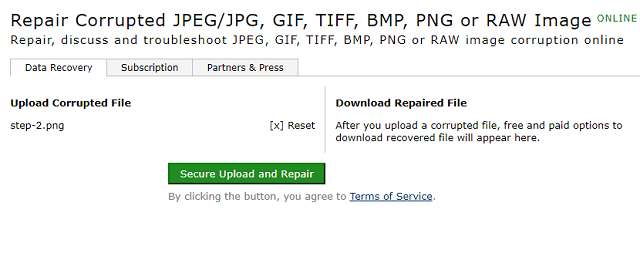
2. Jpeg-Repair
Another way for JPG/JPEG recovery online free is by using Jpeg-Repair. It's a simple web-based application that will allow you to repair your JPG/JPEG images easily. All you need to do is log into their website and start experiencing some pretty good features of this tool.
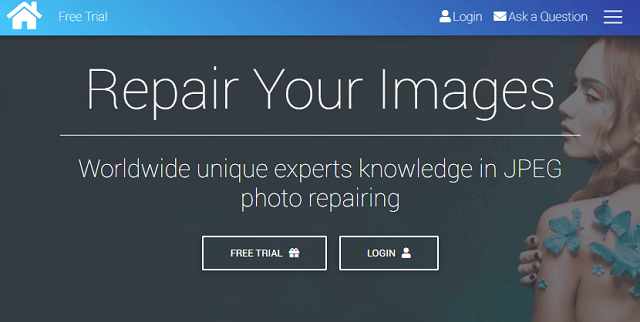
3. Ezgif
The Ezgif is basically an online GIF maker and image editor that has some really cool features including recovering JPG/JPEG files online. It's a really good online tool that can fix your corrupted JPEG/JPG files without giving you any hassle.
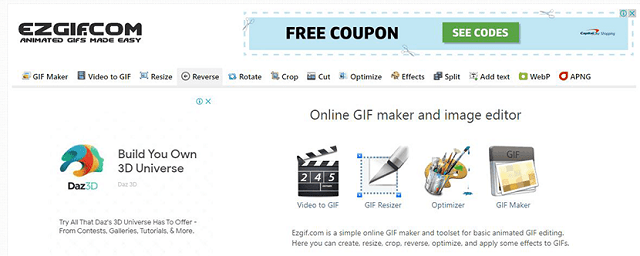
4. Onlinephotofix
Onlinephotofix is a simple interface based web tool that can help you to recover JPG/JPEG online. It has an aesthetic vibe based web interface that gives you nostalgic and old taste. Though the interface gives you a nostalgic vibe, it has some really good features that will help you to do restoration, coloring, manipulation, retouching, etc.
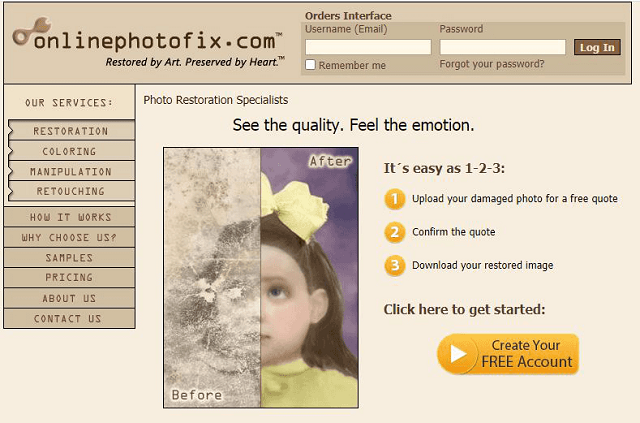
5. Online-convert
Online-covert is basically a web-based free file converter tool that will help you to convert your corrupted JPG/JPEG files into a different format and access the images easily. This is not a website that can fix your corrupted JPG/JPEG images directly but if you convert those images, they can become reusable again.
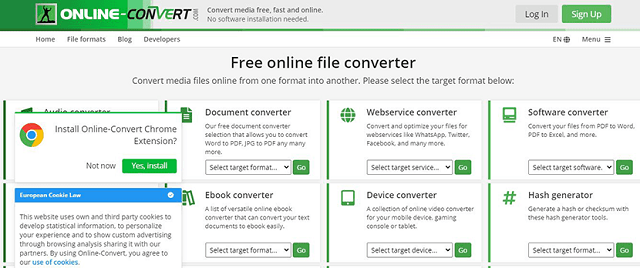
Although there are differences between JPG and JPEG file formats they are both image files that can be recovered by using a good quality data recovery software. In that sense, the Deep Data Recovery tool can be the best choice for you without any hesitation. After following the guideline provided in this article, it should be a piece of cake for you to know how to recover JPG/JPEG files on Mac or Windows PC.
Related Articles
- How to Recover Deleted Pictures from SD Card on Camera
- How to Recover Deleted Photos/Pictures from Computer in Windows 10
- How to Recover Permanently Deleted Photos from iPhone
- How to transfer photos from iPhone to computer windows 8
You will know how to transfer photos from iPhone to computer in Windows 8 using different ways, including using Photos, Windows Explorer. and more. Check the methods in detail and apply one of them to import iPhone photos to Windows 8 with ease. - How to Transfer Photos from iPhone to Flash Drive on Windows
To help you transfer photos from iPhone to flash drive on Windows, there is a collection of proven ways to get photos from an iPhone to a USB connected to a PC. Check them in detail and apply one of them to transfer photos from iPhone to flash drive within minutes. - How to Transfer Photos from iPhone to PC Using iTunes | Full Guide
You can easily transfer photos from iPhone to PC, but not by using iTunes. Read on to know why you can't transfer photos from iPhone to PC using iTunes and how to transfer photos from iPhone to PC easily.